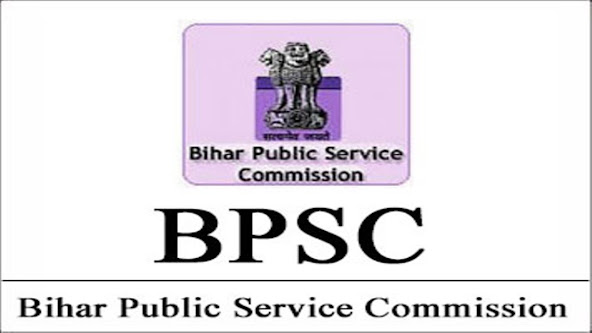BPSC Mains Syllabus
(GS Paper - 1)
GS - 1
(Section -1: History and Art & Culture)
Tribal Movement
1. Santhal Revolt
- Causes and impact of the revolt
- Comparative study of role of different leaders in Santhal Movement
- Significant contribution of Santhal revolt in Indian national movement
- Expansion of Santhal Movement in erstwhile Bihar
- Chief characteristics of Santhal revolt
- Critical assessment of Santhal revolt
2. Birsa Movement
- Causes of the Movement
- Impact of movement in Bihar
- Consequences of the movement
- Critical contribution of different leaders in Birsa movement
- Expansion of Birsa movement
- Relation of Sardari Movement and Birsa Movement
- Socio-religious impact of Birsa movement
- Changes in tribal administration post Birsa movement
3. Tribal Movements
- Chief characteristics of Tribal movements in India
- Expansion/Extension of Tribal movements
- Tribal movements as a messenger of God
- Contribution in freedom struggle
- Critical assessment of tribal movements
- Change in British policy post various watershed revolts
Revolt of 1857
- Causes and impact of the revolt
- Expansion of the revolt in Bihar
- Nature of the revolt
- Consolidation of the revolt in India
- Role of different leader in the revolt
- Role of Babu Kunwar Singh in the revolt
- Comparative studies of different historians/scholars about the revolt
- Critical assessment of the revolt
- Failure of the revolt
- Consequences of the revolt
- Philosophy of the revolt in relation to Indian national movement
- Role of women in the revolt
- Role of different social classes in the revolt
- Extent of the revolt
Peasant Movement
1. Peasant Movements
- Chief characteristics of the peasant's movement in India
- Impact of peasant movement in Bihar
- Philosophy of peasant movement in India
- Expansion and consolidation of peasant movement in India
- Causes and result of the peasant movement
2. Kisan Sabha
- Chief characteristics of Kisan Movement
- Growth and expansion of kisan movement in Bihar
- Role of different regional leaders of Bihar in Kisan movement
- Bakasht Andolan
- Swami Sahajanand Saraswati and Swami Shraddhanand Kisan Movement
- Bihar Provincial Kisan Sabha
Indian National Movement
1. Working Class
- Importance of working class in freedom struggle
- Different trade unions in National movement
- Chief tenets of Working class
2. Kunwar Singh
- Chief characteristics and strategy of Kunwar Singh in freedom struggle
- Role of Kunwar Singh in consolidation of freedom struggle in relation to Bihar
- Impact of Kunwar Singh in Bihar
3. Role of different leaders in Indian National Movement
- Gandhi Ji
- Jawahar Lal Nehru
- Subhash Chandra Bose
- Dr. Rajendra Prasad
- JP Narayan, and other leaders
4. National Movements
- Swadeshi Aandolan
- Champaran Movement
- Bardoli Movement
- Ahmedabad Mill Strike
- Civil Disobedience Movement
- Non-Corporation Movement
- Quit India Movement
(Section - 2: International Relations)
1. India-USA
- Bilateral Relations
- Various area of cooperation
- Various area of conditionality
- Recent development in the relation
- Multilateralism role with USA
- Sectoral relation with USA under various domains like climate, investment, geostrategic, nuclear, etc
- Positive development post political change in USA
- Global stability, security and innovation growth with Indo-USA
- Democracy summit 2021 and various key takeaways
- Climate action and fund mobilization dialogue
2. Indo-China
- Significance of bilateral relation
- Upheaval of relation
- Various area of cooperation and competition
- Challenges pose by China
- Tibetan policy
- Post covid China - India relation opportunity
- China on Indian ocean (string of pearls)
- India's stand and strategy over China
- Indo-china role in world affairs
- China new border policy
3. Indo-Russia
- Time and tested relationship (50 years)
- Area of opportunity and sustenance of relation
- Multipronged and multi-strategically engagement outside India-Russia
- Space and science technology relation with Russia
- Multi axis of India and Russia with other stakeholder
- Russia supporting in Indo Pacific strategy
- India stand and support for Russia
- Critical assessment of Indo-Russia military exercise
4. Indo-Afghanistan
- Vested interest in Afghanistan and India's action
- Current status/stand of India post-Taliban position
- Implication of power axis change for India
- Role of multilateralism in Afghanistan
- Strategic significance of Afghanistan for India
- Changing area of coordination with India and Afghanistan
- Trade and promotion with new export regime developed
- Reflection of signal change in geopolitical dynamics
5. Indo-Nepal
- India policy towards Nepal cooperation and development
- Area of augmentation of relation
- Area of challenges posed by various externalities
- Relation post change in power in Nepal
- Nepal and China axis
- Further step and change in diplomacy required by India
6. Indo-Australia
- Rationale of first 2+2 dialogue
- Application of various policy amid geo political change in Indo Pacific with Australia
- Area of cooperation and multilateralism
- Political and economic integration
- Role and impact of India policy on Australia
- Various negotiated agreement with Australia
- Future collaborations
7. Indo-Bangladesh
- Evolution and assessment of Indo-Bangladesh relation (50 years)
- Contemporary changed relations seen so far
- Various issues and disputes
- Area of agreement
- Suggestion for India-Bangladesh relations
- International immigration and trade
- Bilateral relation
8. Indo-France
- Area of cooperation
- France role in Atmanirbhar Bharat
- Agreements involved between India and France
- Diaspora specification
- France role in space cooperation and digital space
- Global agendas
- Assessment of project 75I and defence coordination
(Section - 3: Statistical Analysis, Diagrams & Graphs)
1. Pie Chart
2. Tabular Diagram
3. Bar Diagram/graph
4. Basic of average chapter
Previous year mains Questions and Answers - Click here
Notes to boost your Preparation
Optional Notes
Note - This is my Vision IAS Notes (Vision IAS Class Notes) and Ashutosh Pandey Sir's Public Administration Class notes. I've also added some of the information on my own.
Hope! It will help you to achieve your dream of getting selected in Civil Services Examination 👍





